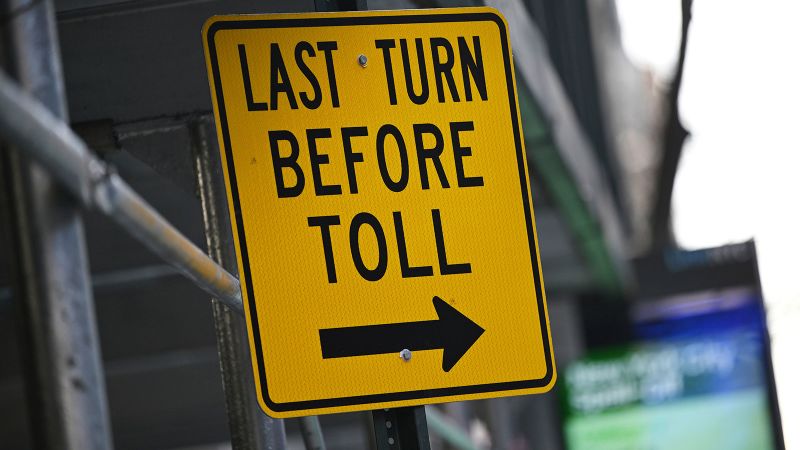In a significant turn of events tied to the ongoing debates over urban transportation policies, the federal prosecutor’s office in Manhattan inadvertently submitted an internal memo that highlighted flaws in the Trump administration’s strategy aimed at abolishing New York’s congestion toll. This toll mandates fees for driving into the most congested areas of Manhattan, and the memo argues that if the government genuinely seeks to oppose this fledgling initiative, it should reconsider its approach.
The internal memo, which was intended for review by an attorney at the U.S. Department of Transportation, was mistakenly filed on a Wednesday night amidst New York’s litigation against the federal administration concerning its attempts to dismantle the toll system. This blunder occurred shortly after the Trump administration issued a third ultimatum to New York City, instructing it to cease toll collection practices that commenced in January. Under this program, the majority of drivers are charged a fee of $9 to enter the most notoriously traffic-heavy sections of Manhattan.
Within the memo, three assistant U.S. attorneys from the Southern District of New York pointed out that pursuing legal action in defense of Transportation Secretary Sean Duffy’s decision to withdraw federal approval for the toll indicates a “considerable litigation risk.” They cautioned that such a course of action would likely lead to a court defeat. Instead, the memo suggested that a more viable approach for the Transportation Department would be to seek termination of the toll using alternative bureaucratic avenues that frame the change as not aligning with federal goals.
In response to this unexpected revelation, Nicholas Biase, a spokesperson for the Southern District of New York, attributed the filing to an “honest error,” emphasizing that it was not a deliberate act. Meanwhile, Dr. Duffy’s office expressed dissatisfaction with the prosecutor’s handling of the case, even suggesting that there may have been incompetence or a motive to resist their directives within the Southern District’s actions. The agency’s sentiments indicated a severe discontent in how the matter was progressing, calling the mishap akin to “legal malpractice.”
This incident unfolded amidst a backdrop of upheaval within the federal prosecutor’s office in Manhattan. Several high-ranking officials had recently resigned, openly criticizing the federal leadership in Washington. They expressed concern regarding the handling of a corruption case against New York City Mayor Eric Adams, asserting that directives given to them were unethical and fundamentally wrong. In the midst of this turmoil, Jay Clayton, who was nominated by President Trump to lead the Manhattan office, was recently sworn in as its interim head.
Donald Trump himself, whose iconic Trump Tower lies within the newly established toll zone, has vocally opposed the congestion pricing initiative since its inception. Upon taking office, he vowed to terminate the program. In February, the administration commanded New York to close the toll initiative, withdrawing federal support and characterizing the charge as a detrimental blow to working-class individuals and small business owners. The New York City government responded rapidly by filing a lawsuit in federal court seeking to maintain the toll collection.
As tensions escalated, the Transportation Department reiterated its demands for New York to eliminate the toll. They threatened to retract financial backing and approvals for various transportation projects if compliance was not achieved. The toll itself varies depending on the vehicle type and time, adding additional financial pressure on suburban commuters who already pay toll fees to cross bridges and tunnels into the city.
During peak hours, most drivers incur a $9 fee when entering Manhattan, specifically south of Central Park, from 5 a.m. to 9 p.m. on weekdays and from 9 a.m. to 9 p.m. on weekends. Conversely, those traveling during off-peak hours see the toll drop to $2.25. City officials advocate for the program, arguing that it not only alleviates traffic congestion but is also projected to generate substantial revenue for the enhancement of various public transportation services, including subways, commuter trains, and buses.
In summary, an unintentional filing by the Manhattan federal prosecutor’s office has unveiled significant vulnerabilities in the Trump administration’s approach to contesting New York’s toll policy. As various stakeholders weigh the implications of this incident, the growing tension between state and federal authorities on urban transportation continues to evolve, raising questions about effective policy implementation and legal strategies moving forward.



